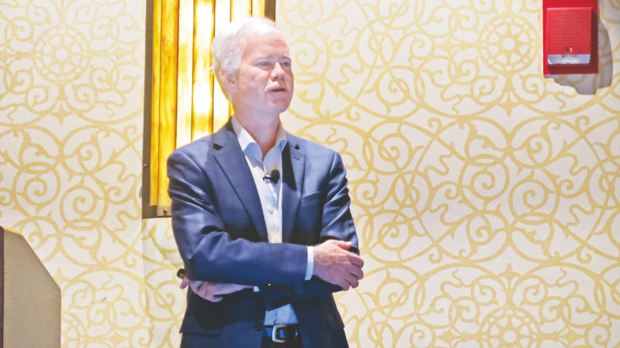Troy, Michigan – Mobility always has been at the core of the automotive industry, and now it's also about to rock that same core.
Autonomous vehicles are on the horizon. And even if that horizon is distant, the industry is preparing to design a new world where millions of people would gain access to the road if the technology can be brought to the mainstream.
John McElroy, host of Autoline Daily and Autoline This Week, discussed the challenges and the possibilities of such a world during his keynote address at the recent Rubber in Automotive Conference, held 13-14 June in Troy, Michigan.
"The largest auto makers are looking at how to get into mobility, not just making cars, but providing mobility for all segments of society." McElroy said. "The very old, the very young, anybody with any kind of a disability, anybody who has a drug and drinking problem, are now soon going to be able to have their own set of wheels. To be able to get a car or get taken to where they need to go. It's a megatrend, the sharing economy."
Ride sharing is at the core of autonomous vehicles. He said more people—specifically millennials—are interested in many different sharing services like Uber and Lyft. And that changes the way a car is used.
"This is a global phenomenon," he said. "And the use of this sharing is starting to grow tremendously. All the OEMs want to get in on the action because they realise that this could be a threat to their business model. So many others are already getting into it, like the daily rental companies. They're starting to come up with ways that you can share a ride or even share your own car."
Sharing economy
McElroy said the sharing economy is going to drive down the cost of transportation. The segment is growing fast. Millions of users are already on Uber, Lyft and other global car sharing services—including Didi, a Chinese firm that drove Uber out of the country because it's so big.
"As we see this change taking place, where maybe people are no longer going to buy cars but buy their mobility, we're going to have to change the way we design cars," McElroy said. "If a vehicle is going to be used 20 hours a day instead of being parked for 23 hours a day, it's going to get worn out much faster. Today's cars are not designed for quick and easy replacement."
McElroy said that if a customer is looking to replace the carpet in a car, it could cost upwards of $5,000 (€4,200) because you're not just paying for the carpet—you're paying to have the interior disassembled to replace that carpet. In a world where cars are upwards of 20 times more active than they were before, those kinds of costs are not feasible.
As software becomes more prevalent within automobiles, overnight—or over the air—updates become more important. These occur when the car is parked in the garage, by the time the user is ready to go in the morning, the car could have received an OTA update making it faster, allowing it to go further on an electric charge, improvements to the autopilot or sound system.
Tesla already has over the air updates.
"Tesla is so far out in front of everybody else in the automotive industry it's just amazing," McElroy said. "As you have new software updates coming that can improve the performance of the car, OTA is going to play a critical role. We're on the verge of having cars that don't get worse over time, they actually get better."
Pure comfort
While new technology may be tantalising, McElroy said there was one key thing older vehicle models got right: the luxury experience.
"If you go to full autonomy, where all you're doing is whatever you want inside a car, you're not going to care how fast it accelerates from zero to 60," McElroy said. "You're not going to care one iota how fast it can get through a slalom course or how many Gs it can generate on a skid path. You're going to want to go in pure comfort.
"Back in 1918, they had a much clearer idea of what true luxury is all about. That's something the industry is going to have to go back to get. We should combine new technology with the old way of doing things."
His mantra was simple: "Bring back the Boulevard Ride," showing a picture of a 1973 Cadillac Fleetwood 75 and its plush velvet seats. With autonomous vehicles eliminating the need for focus and enhancing the need for comfort, he stressed that interior designs are going to be that much more important.
McElroy said there already is noise cancellation technology that allows each person to listen to whatever audio they desire without anyone else hearing. Interiors that can transform into multiple settings will likely win out in the market.
"I think there's an opportunity here to look back to the past and combine some traditional approaches to luxury and comfort, then combine that with modern technology," he said.






